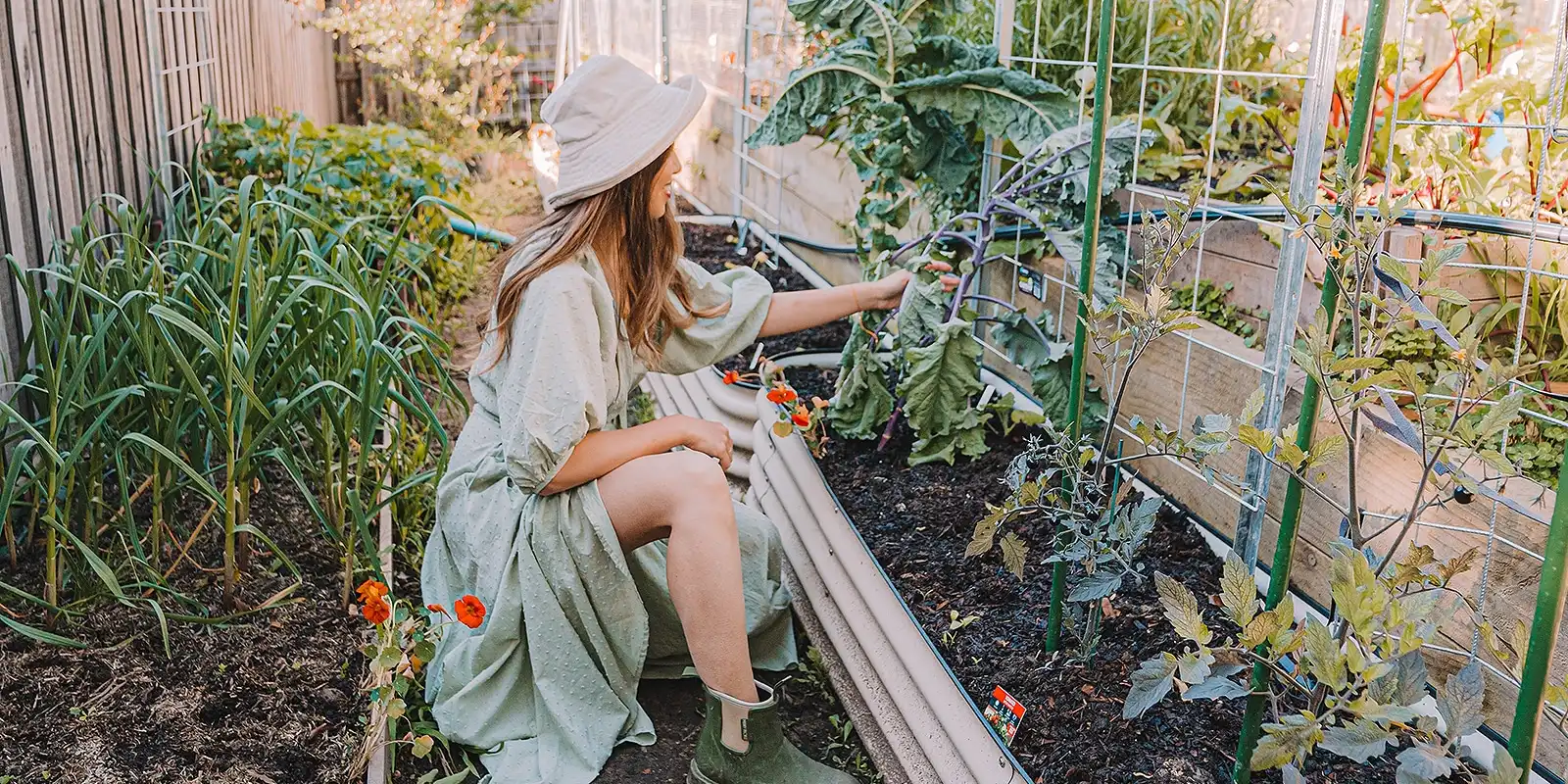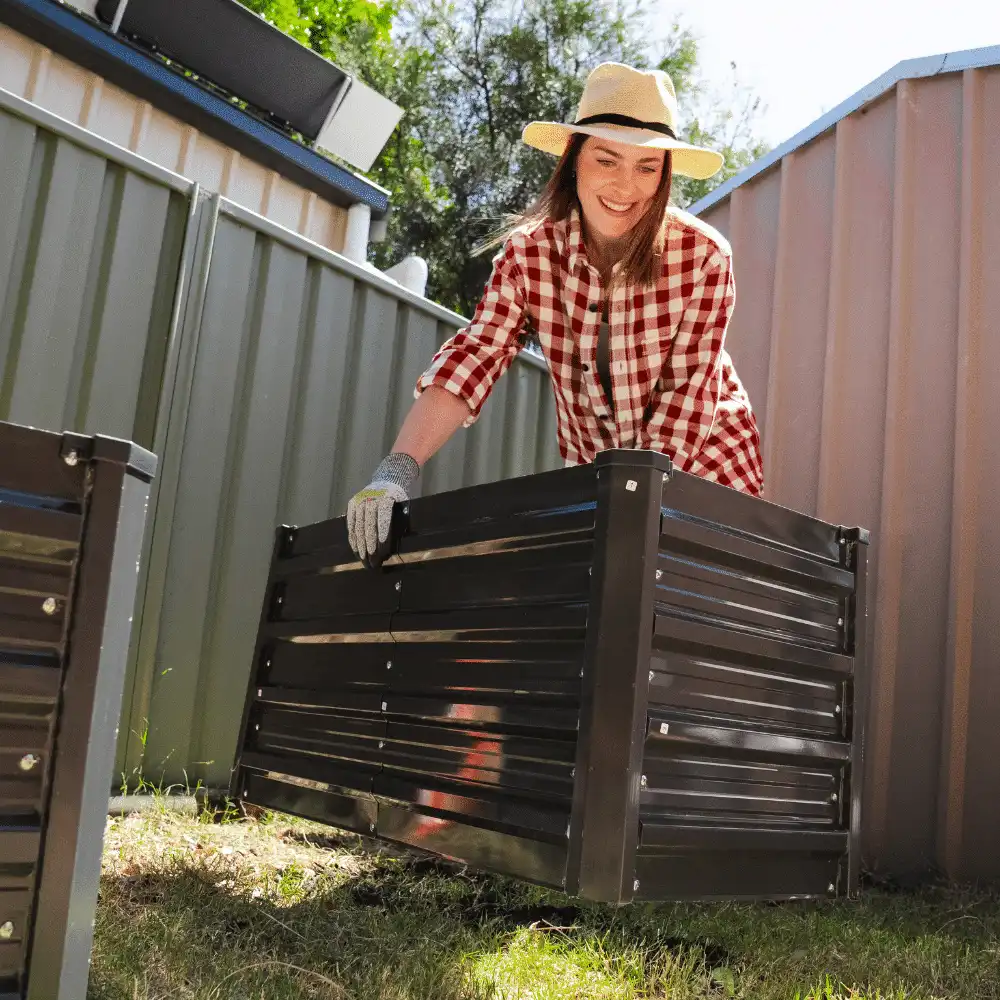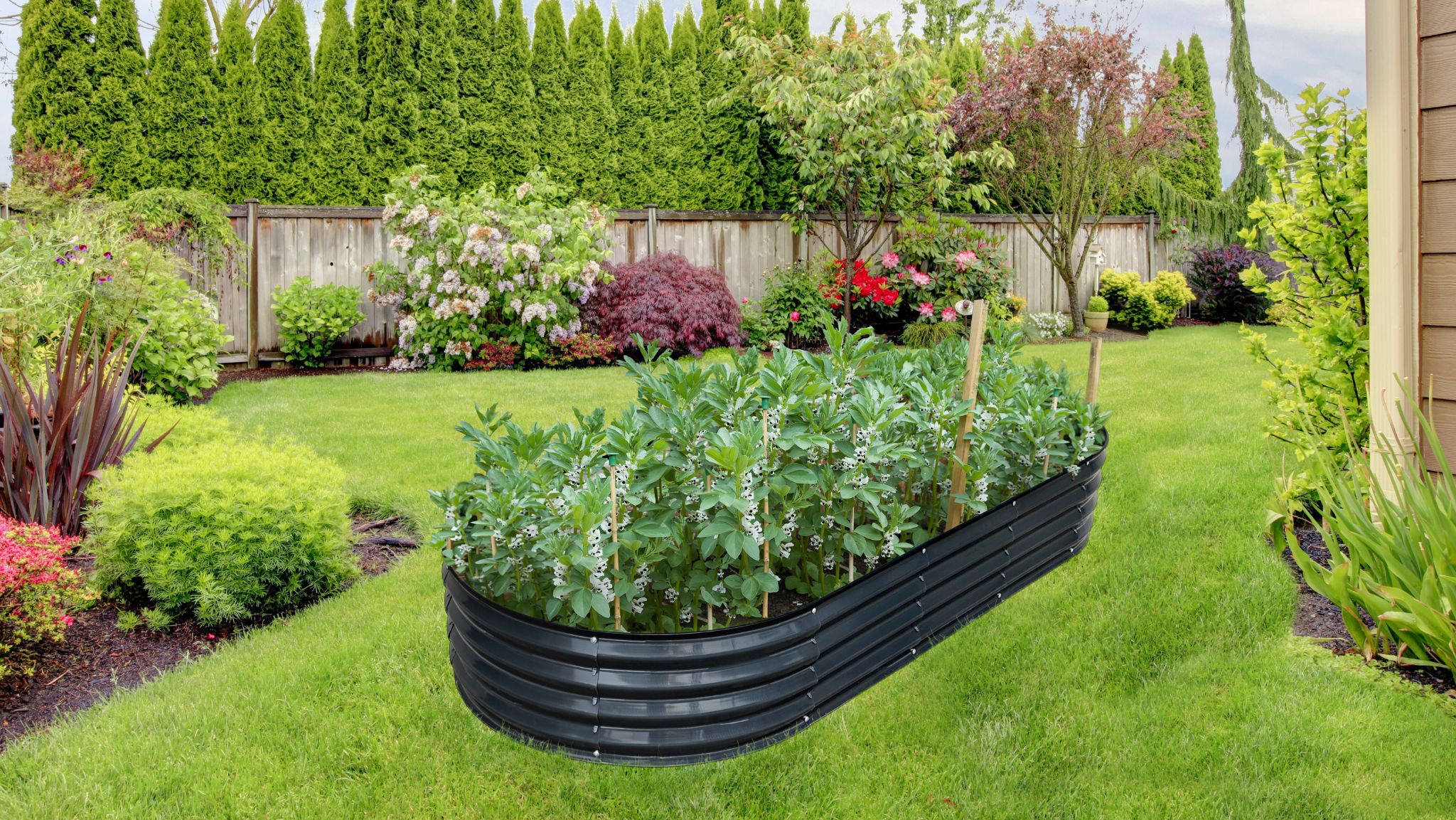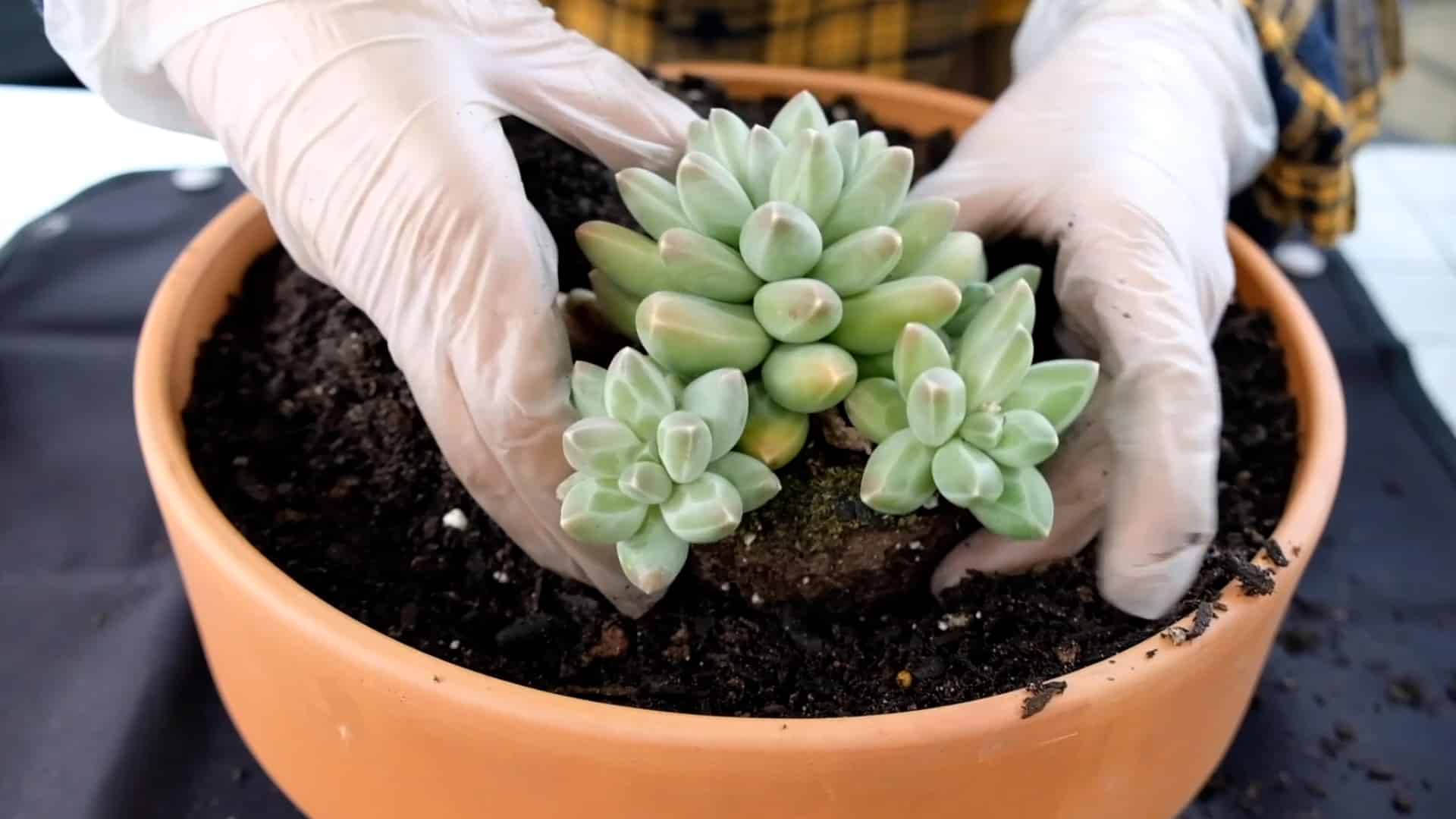Inspiration & Advice
7 spring gardening tips to prep, plant and bloom your backyard

Don’t you just love spring? The days stretch longer, the sun nudges winter away, and the great outdoors calls louder than a kookaburra at sunrise. It’s a season as sweet and bright as ripe cherry tomatoes!
If your backyard is looking a little sorry for itself, or your garden beds have been gathering weeds over winter, why not answer the call with some spring gardening?
From clearing out debris to feeding the soil, planting fresh flowers and vegies, and setting up an easy watering system, now’s the perfect time to roll up your sleeves, get your hands dirty, and spring into action with Jack!

1 - Snip away winter’s scruffy edges
First off, it’s time to get rid of the old to make way for the new! That means tackling any damage winter has left behind.
Here’s a handy Jack checklist:
- Sweep leaves and remove rubbish and old furniture and pots
- Pull out those pesky weeds. Yes, we’re looking at you, capeweeds, winter grass and bindis!
- Look for signs of pests. Get rid of aphids, slugs and snails, spider mites and whiteflies using eco-friendly sprays and bait like neem oil and beer traps
- Trim back any dead, damaged or diseased branches on trees, shrubs and perennials
- Snip away tired or scraggly tips to encourage fresh, lively spring growth
- Remove any crossing or overcrowded branches. Better airflow keeps your plants happy and healthy!

2 - Prep those garden beds
Flourishing plants, blooms and vegies start with great soil! Winter can zap dirt of essential nutrients like nitrogen, potassium and phosphorus, compact it and slow down busy microbes. Plus, too much rain can boost acidity.
Here’s how to make your soil sing this spring:
Do a soil ball test
Grab a small handful of dirt and try to roll it into a ball. This is a simple way to figure out what kind of soil you’re working with, and how to give it a spring boost!
- Clay soil – Sticks together into a firm, heavy ball
- Fix with – Compost, well-rotted manure or gypsum to loosen it and improve drainage
- Sandy soil – Falls apart, hard to form a ball
- Fix with – Plenty of compost, leaf mould or coconut coir to help it hold water and nutrients
- Loamy soil – Makes a soft ball that crumbles easily – a gardener’s dream!
- Fix with – Compost or worm castings to top up nutrients and keep it happy
Check soil pH
Grab a cheap soil pH kit from Bunnings to check if your soil is feeling a bit sour or too sweet:
- Acidic (pH < 6)? Sprinkle a little lime to cheer it up.
- Alkaline (pH > 7)? Add some sulphur to bring it back in balance.
Healthy pH = happy, hungry plants!
Add organic goodness
Feed your soil some love with:
- Compost: Packed with nutrients and microbes
- Well-rotted manure: Boosts fertility
- Leaf mould: Keeps soil soft and moist
Work in a 5–10 cm layer into the top 15–20 cm – your plants will thank you!
Spread some mulch magic
Spread straw, wood chips or grass clippings 5–7 cm deep.
Using mulch:
- Keeps your soil nice and moist
- Stops weeds from stealing the show
- Adds extra nutrients as it breaks down
Aerate that soil
Give compacted dirt some breathing space and help your plantlings flourish.
How? Simple. Just use a garden fork or soil aerator to poke holes 10–15 cm deep, spaced 10–15 cm apart. This gets water, nutrients and air straight to the roots, creating stronger growth and smiling plants!

3 - Set up raised beds and containers
If your borders are already full or you only have a small backyard, why not set up some raised garden beds and pots and planters this spring? More growing space means more growing fun! Plus, they can add a stylish, designer edge!
Install raised garden beds
Plants, vegies and herbs love raised beds – and so will you. They block weeds, have better drainage and make gardening easier on your back and knees!
Grab one of our easy-to-set-up Jack Raised Garden Beds, fill with fresh soil and compost, and start planting your pretty displays or edibles!
You can’t go wrong with our corrugated Square Raised Garden Bed, with its compact design and stylish powder-coated charcoal finish.
Go crazy with containers
Containers let you grow just about anything — herbs, flowers and even vegies — anywhere from patios to balconies.
Use pots with good drainage, fill them with nutrient-rich soil and water regularly. Move them to chase the sun or create a colourful garden corner that’s totally your own.
Need some inspo? Check out our Oxyshield Café and Copa Series Planters. Their rusty patina is weather-loving and loved by garden designers. Or try our clever Self-Water Raised Planter – It’s great for beginners!
Grow up with Garden Up®
Hanging planters and baskets turn fences, walls and beams into productive green space – perfect for climbing beans, trailing herbs or an eye-popping flower display. They make the most of small spaces, are easy to harvest and instantly up your garden’s wow factor.
Check out our Garden Up Decorative Baskets and Petite Wall Pots!
See also: Jack’s no-fuss guide to container gardening for newbies

4 - Get growing seasonal herbs and vegies
If you’ve been wanting to start growing edibles, early spring is definitely the time!
Here are some delicious spring growers to add to your beds and planters:
- Herbs – Basil, parsley, coriander, chives, dill, mint
- Vegetables – Cherry tomatoes, zucchinis, lettuce, beans, cucumbers, carrots, radishes
If you’ve properly prepped your soil, you should be ready to go! We recommend starting with seedlings or plantings. These are much easier and faster than seeds.
See also: Sow, grow, harvest! Top vegetable to plant in spring
If you want to plant really smart, try companion planting. This means pairing plants that help each other thrive. Basil with tomatoes boosts flavour, beans with lettuce enrich the soil, and carrots near onions keep pests away.
Plus, give your plants the support they need: tomato cages, stakes for beans, or trellises for climbing vegies will keep them healthy and standing tall.
You’ll soon be snipping fresh herbs for dinner, harvesting crisp greens, and enjoying the satisfaction of homegrown produce straight from your garden to your plate!

5 - Add blooms to pull in pollinators
Want a buzzing, fluttering garden full of life? Spring is the perfect time to plant bright, nectar-rich flowers that attract all your garden’s best friends – bees, butterflies, hoverflies and even nectar-loving birds.
More blooms mean more pollinators, which means healthier, more productive flowers, fruit and vegies. Mix colours, shapes and flowering times to keep your garden humming all season long. And watch your backyard come alive with activity!
Some of our native favourites? Kangaroo paw, grevillea, paper daisies and echinacea. Plant them in well-drained soil, give them plenty of sun and water regularly.

6 - Set up easy watering systems
Old Bert at number 72 might have time every day to head outside with a watering can or hose. But many of us might find it tough to keep a freshly prepped spring garden moist. That’s where a watering system (irrigation) comes in!
Choose your sprinkling system
- Drip irrigation – Perfect for garden beds, vegies and herbs – drizzles water slowly to roots.
- Soaker hoses – Great for rows of plants or larger garden beds – seeps water along their length.
- Sprinklers – Best for lawns and open areas (and water fun for the kids!), but less efficient for flowerbeds.
How to set it up
- Step 1: Plan your layout – Map your beds, containers and lawn areas so every plant gets a proper drink – don’t leave any thirsty corners! Make sure hoses or drip lines reach every plant without overlap or puddling.
- Step 2: Install timers – Automate watering for consistent hydration. Early am or late afternoon is best to reduce evaporation and let roots soak it up.
- Step 3: Test and tweak – Run the system and check all your plantlings are getting enough H2O. Adjust drippers or hoses as plants grow.
With a watering system installed, your garden stays hydrated, your plants thrive, and you spend less time dragging hoses around! Plus, you save water and keep your backyard blooming this spring!

7 - Plan out your maintenance schedule
A happy, flourishing garden needs a little regular TLC. So, make sure you set a weekly and monthly routine to follow through spring and beyond.
Here’s a quick guide:
Every week:
- Pull weeds before they take over
- Check soil moisture and adjust sprinkling if needed
- Snip dead or damaged leaves on vegies and herbs
- Pick fresh herbs and any ripe fruits and vegies in your vegetable garden
- Keep an eye out for pesky pests or early signs of disease
- Snip off dead flowers from annuals and fast growers
Every month:
- Prune shrubs, perennials and slower-blooming plants
- Top up mulch around garden beds and containers
- Check and tweak supports, trellises and watering systems
- Fertilise or feed plants – spring is the perfect time to give soil a nutrient boost!
- Check soil pH, especially after heavy rains or if plants are looking off-colour
A little attention every week and month keeps your backyard lush, healthy and buzzing with life, and saves you from scrambling when things start looking sad.
Ready to spring into action?
With these seven tips on hand, you’ve got no excuse not to get that garden looking the goods this spring!
All you need to do now is pick your Jack garden products, then pop along to your local Jack supplier to grab them alongside your herbs, vegies and other things like mulch and watering systems.
Given your garden a spring makeover? Why not share some snaps on socials, tagging @meetdiyjack? We’d love to see your seasonal prepping and might even give you a shout-out!
After more seasonal inspiration? Check out these other helpful resources: